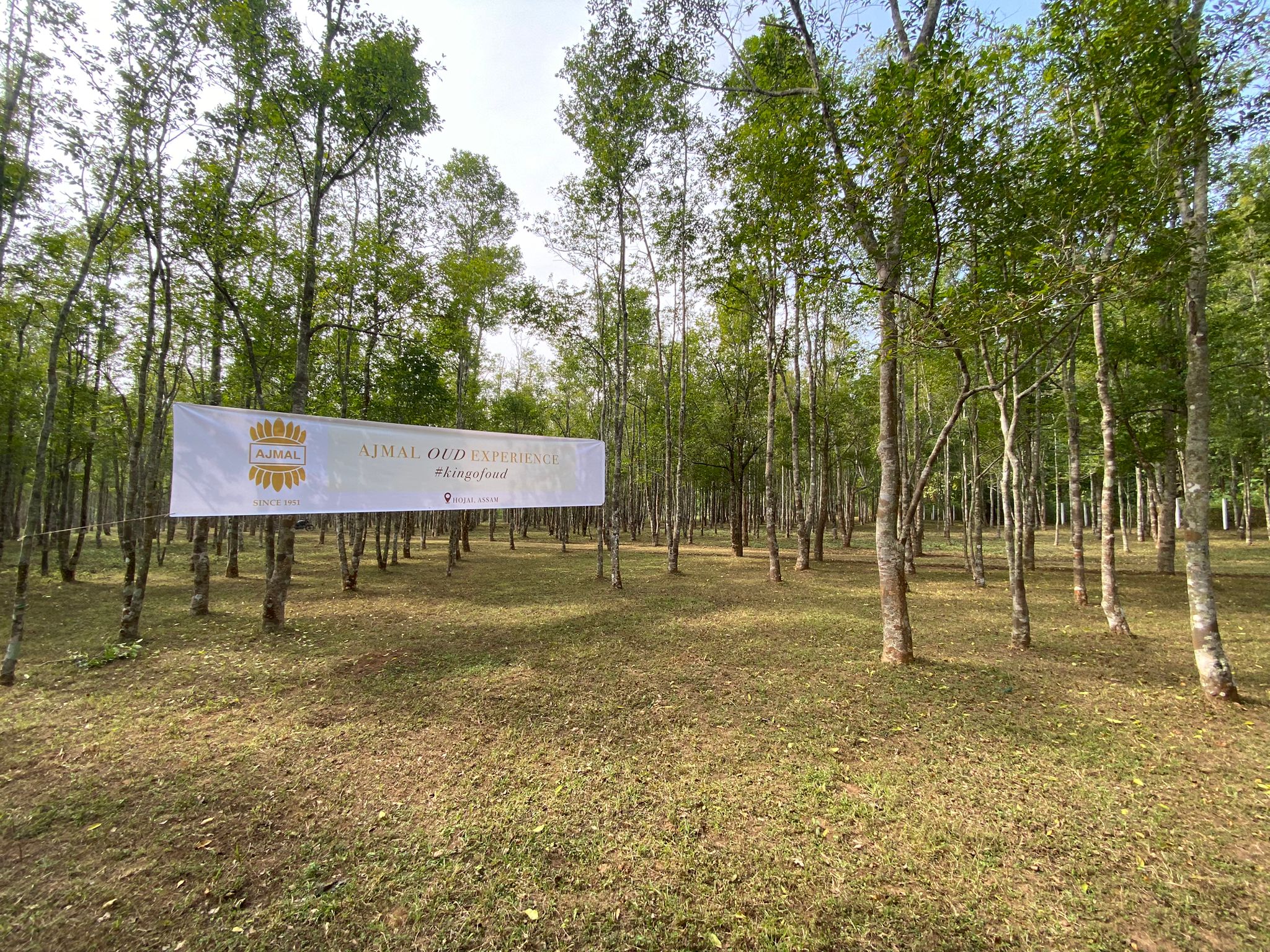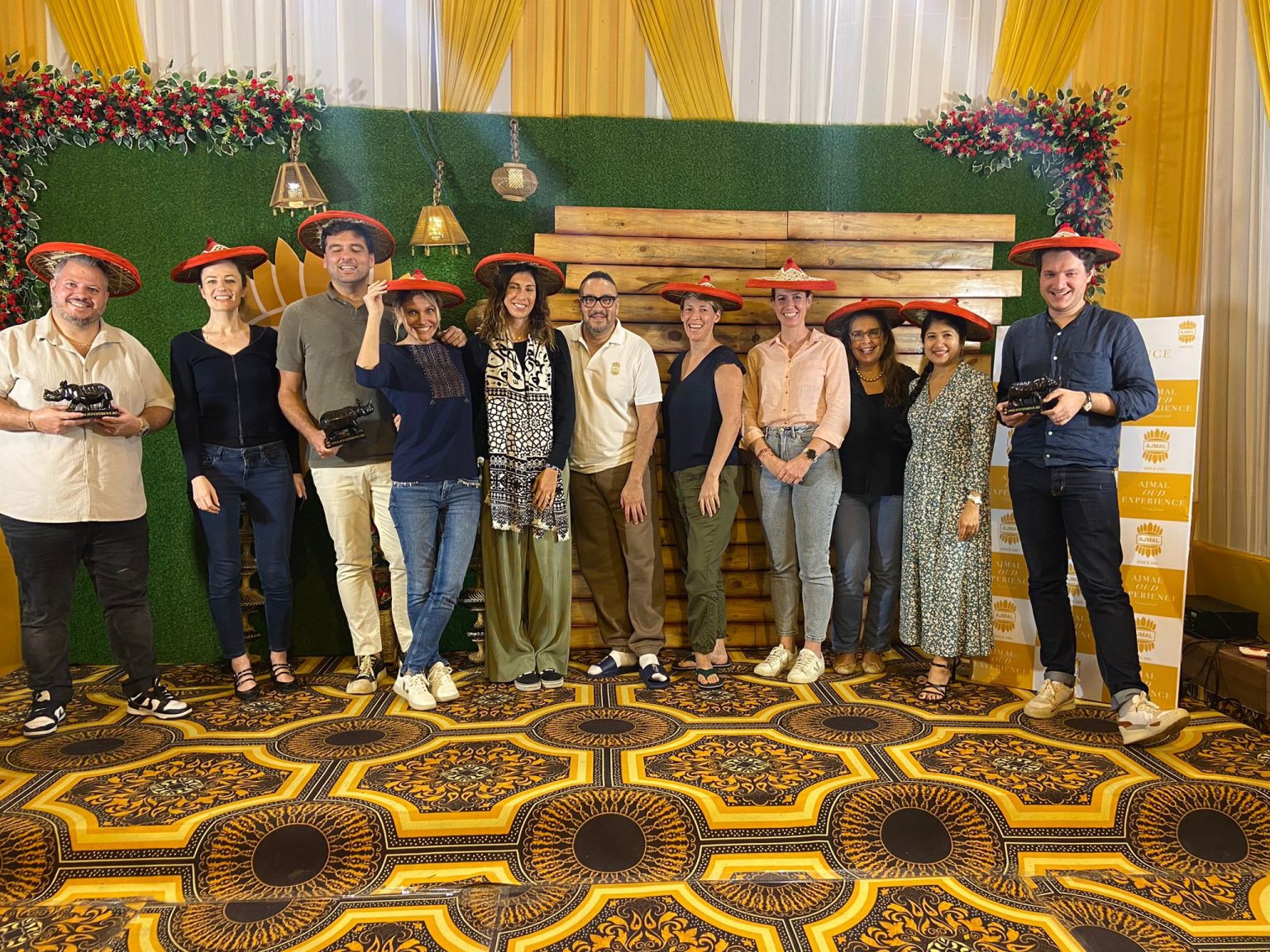Visiting An Agarwood Plantation

Perfumer Ana Gómez specialises in Middle Eastern perfumery. Last month, she was invited by Ajmal, a perfume and essential oils manufacturer, for an exclusive visit to its agarwood plantations in Assam, northwest of India. Every few years, Ajmal invites established perfumers from all over the world, to share the company’s ongoing commitment to preserving the Oud industry and communicate the impact of their work on local communities. Maria Ángeles Santiago, senior perfumer at Iberchem, participated in this experience in 2019. This year, was Ana Gómez’ turn. In this short interview, she tells us more about her trip.
What can you tell us about this experience? What have you learned about the oud industry?
Over the few days I spent with the Ajmal team, I discovered the impact the agarwood industry has in this region. I met people involved in its production, harvesting, and investigation. I quickly realised that, besides being a key raw material in Middle Eastern perfumery, it is also of great importance for the people of Assam, due to its cultural, patrimonial, and social heritage.
After touring the plantations, research centre, distillation plant and other facilities, we visited several places that Ajmal has supported and promoted (orphanages, schools, and hospitals), in order to understand the activity of Ajmal beyond the fragrance industry.
What did the visit mean to you as a perfumer?
We had several olfactory sessions where I learned more about different oud varieties, such as oud Tarakan from Indonesia and Vietnamese Oud. We also visited the botanical research centre, where new and more sustainable ways of manufacturing Oud are being explored. This is also where other essential oils and co-distilled products are being developed.
It has also been enriching to share this experience with fellow perfumers in the industry. As there are not so many perfumers around the world, hearing different perspectives is a privileged opportunity that benefits our work.

Agarwood is one of the most highly prized and expensive raw materials in the fragrance industry. What makes it so special?
Oud (which comes from the Aquilaria tree) isn’t valuable or expensive in itself. In fact, it mostly has value to perfumers and bakhoor producers. It is also used in design. What really makes it so valuable is the infection in this type of wood caused by the fungus phialophora parasitica.
Once this wood gets infected, it produces an aromatic resin that becomes ingrained in the agarwood. This can be distilled into essential oil or burned as a Bakhoor incense, and it produces a unique, very rare, and highly prized scent for perfumers.
The oil or smoke from the wood produces different smells, and this depends on the tree species. Such as Oud from the Aquilaria crassna, Aquilaria malaccenis or Aquilaria Beccariana. This raw material is quite expensive due to the time it takes to extract it. Added to this, its yield is low, as only 100g of oil can be produced from about 100 kilos of wood.
What measures are being taken to ensure sustainable agarwood production?
Some agarwood species are currently classified as endangered due to overexploitation, which can challenge the perfume industry. To ensure their preservation, Ajmal is committed to
planting ten new trees for every tree it harvests. They are also researching new ways to improve their productivity. Ajmal also delivers seeds and cuttings to farmers in the area for planting and cultivation, thereby contributing to the spread of Agarwood in Assam.

How do you use oud in your creations?
As a perfumer, I use this raw material carefully and exclusively. I use it only in small quantities and only when it provides an added value to the fragrance. To me, oud is the cherry on the top of the cake for my oriental compositions. Its olfactory impact is considerable. It is better appreciated when it’s combined with woody notes, such as cedar, sandalwood, patchouli, and other popular notes in the Middle East, such as amber, leather, and musk.
When used wisely, oud blends in perfectly with the rest of the ingredients in the formula and brings unparalleled durability to the perfumes. A small amount of oud can make a fragrance last for weeks. It can also be used as the main ingredient in the formula, adding a mysterious, sensual, woody, and even animalized character to the composition. Either way, it is a wonderful raw material to work with. It leaves no one feeling indifferent.
To find out more about Oud. Click here to read our blog post on this raw material.
